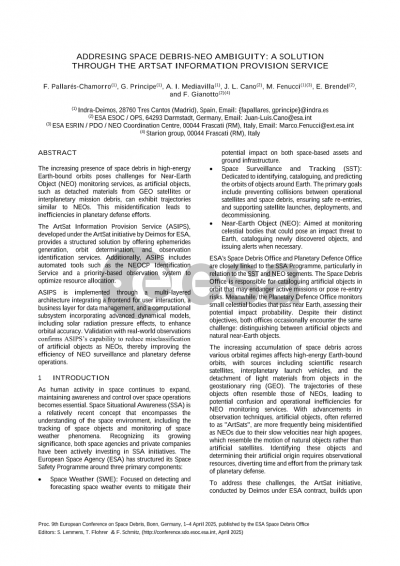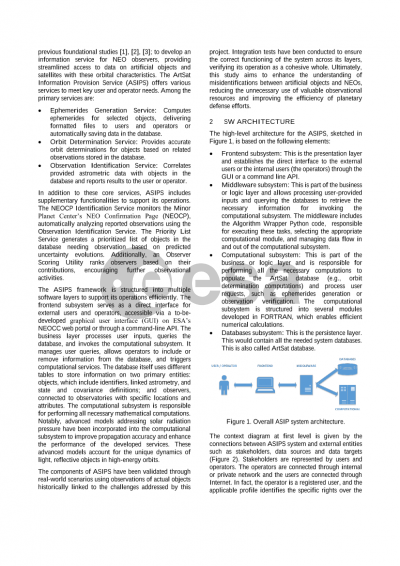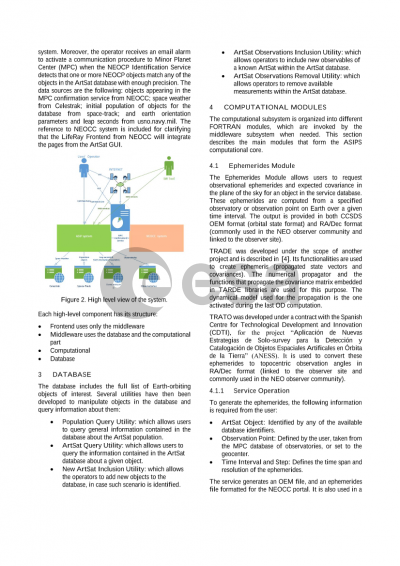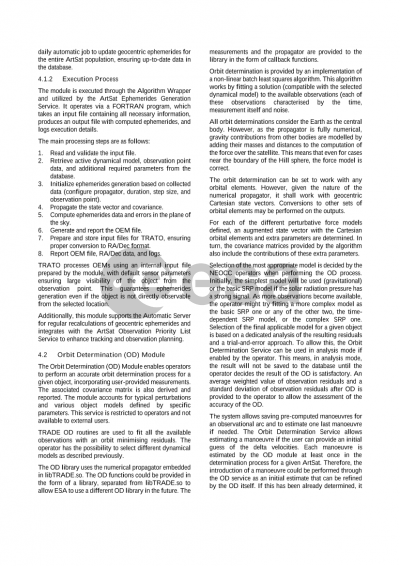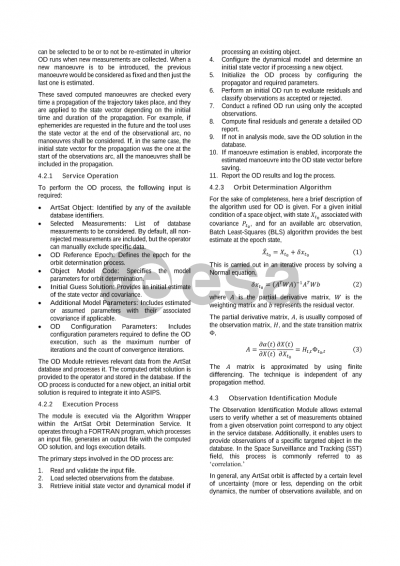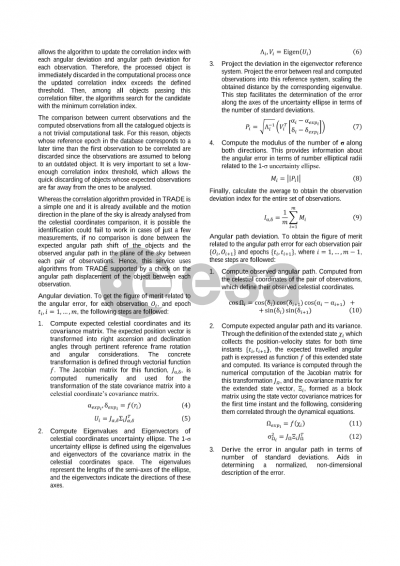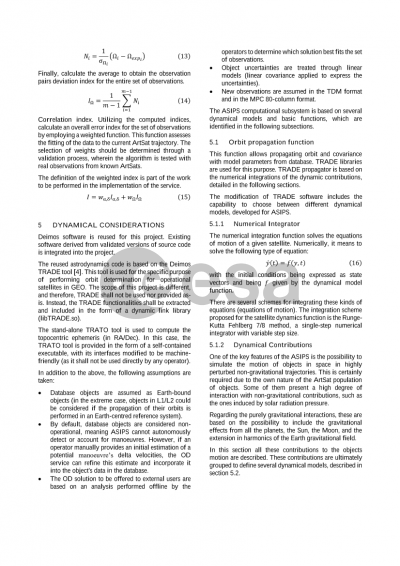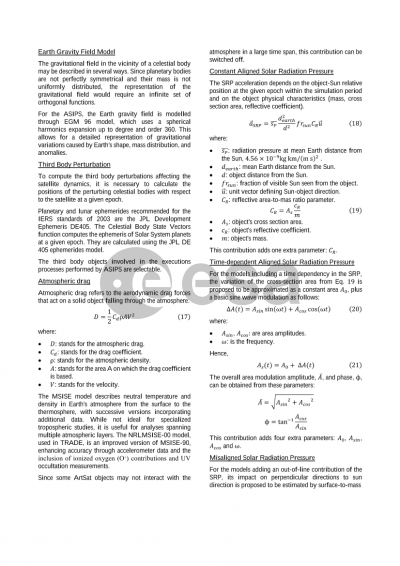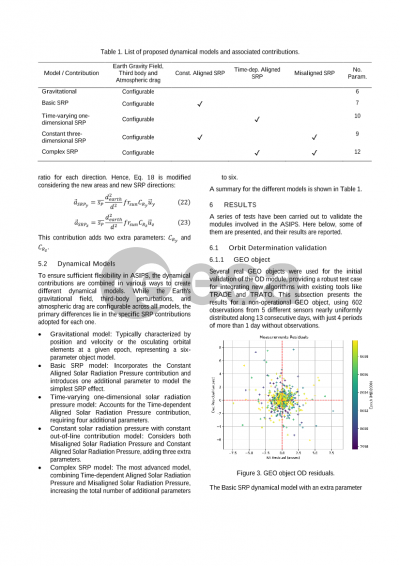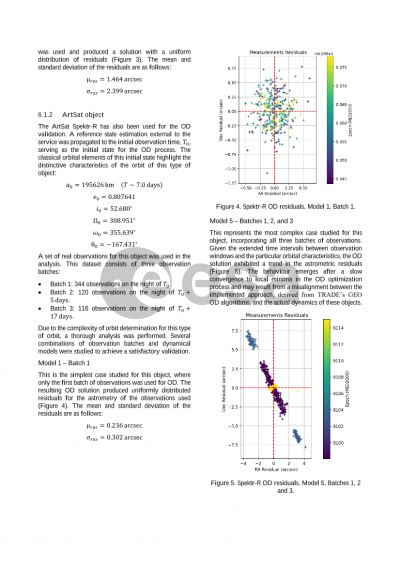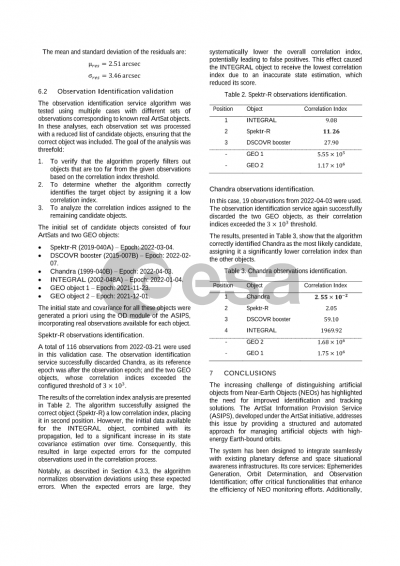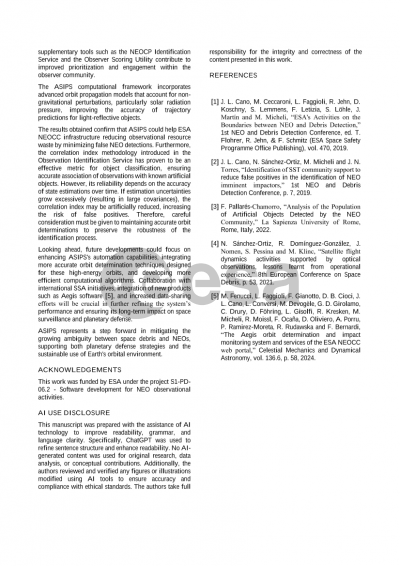Document details

Abstract
The increasing accumulation of space debris across various orbital regimes also affects high-energy Earth-bound orbits, due to sources such as scientific research satellites, interplanetary launch vehicles, or the detachment of light materials from objects in the GEO ring. The trajectories of these objects often resemble those of Near-Earth Objects (NEOs), which can lead to confusion and operational inefficiencies for NEO monitoring services. The ArtSat initiative, conducted by Deimos under ESA contract, seeks to develop an information service for NEO observers, providing streamlined access to data on artificial objects and satellites (ArtSats) with the mentioned orbital characteristics.
The ArtSat Information Provision Service (ASIPS) offers various services to meet key user and operator needs. Among the primary services are: the Ephemerides Generation Service, which computes ephemerides for selected objects, delivering formatted files to users and operators, or automatically saving data in the database; the Orbit Determination Service, which provides accurate orbit determinations for objects based on related observations in the database; and the Observation Identification Service, which correlates provided astrometric data with objects in the database and reports results to the user or operator.
ASIPS also includes supplementary services to support its core functions. The NEOCP Identification Service monitors the Minor Planet Center’s NEO Confirmation Page, automatically analyzing reported observations using the Observation Identification Service. The Priority List Service generates a prioritized list of objects in the database needing observation based on predicted uncertainty evolutions. An Observer Scoring Utility is also incorporated to rank observers based on their contributions, encouraging further observational activities.
To support these services, the ASIPS is structured into multiple software layers. The frontend subsystem serves as a direct interface for external users and operators, accessible via a GUI on ESA’s NEOCC web portal or a command line API. The business layer processes user inputs, queries the database, and invokes the computational subsystem. It manages user queries, allows operators to include or remove information from the database, and triggers computational services. The database itself uses different tables to store information on two primary entities: objects, which include identifiers, linked astrometry, and state and covariance definitions; and observers, connected to observatories with specific locations and attributes. Finally, the computational subsystem is in charge of all required mathematical computations. It is worth noting that advanced models addressing solar radiation pressure are incorporated into the computational subsystem to obtain a more reliable propagation and, hence, improve the performance of the developed services. These advanced models account for the unique dynamics of light, reflective objects in the mentioned high-energy orbits.
The components of ASIPS have been validated with real-world scenarios, using observations of actual objects historically linked to the challenges addressed by this project. Integration tests have been conducted to ensure the correct functioning of the system across its layers, verifying its operation as a cohesive whole.
Preview
